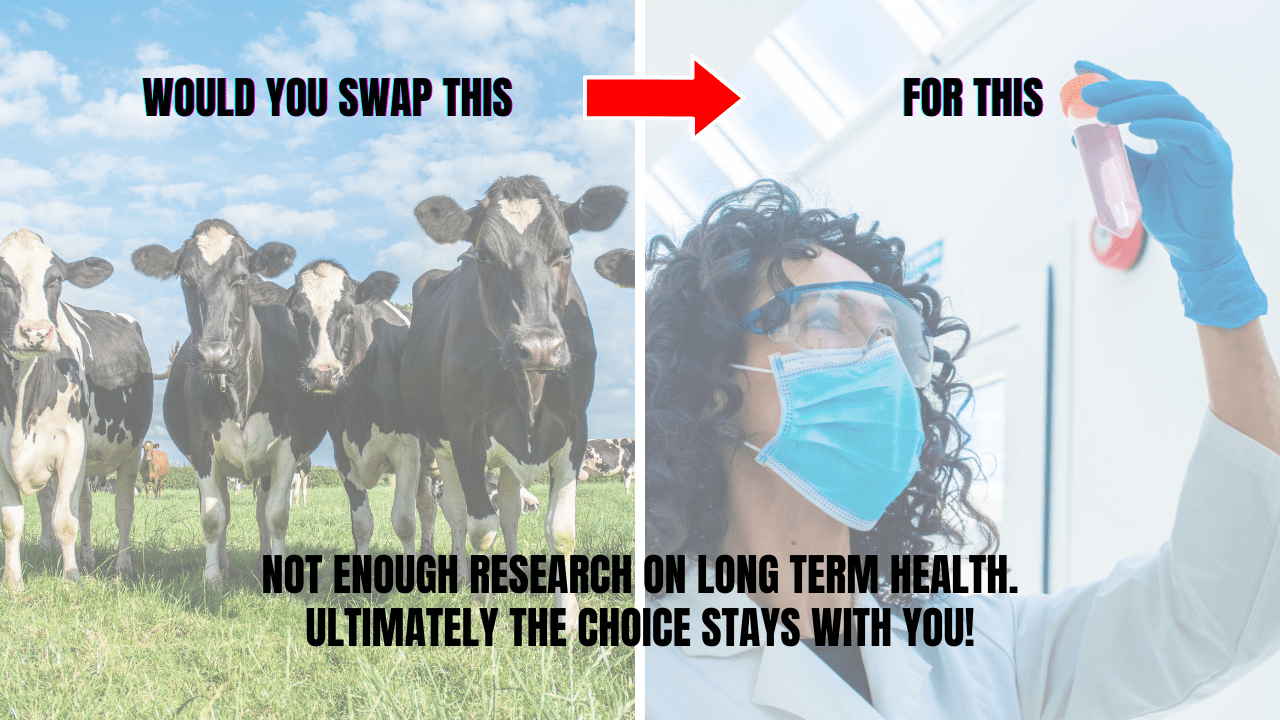
Lab-grown meat, also frequently referred to as lab-grown food, cultured meat, or cultivated meat is rapidly emerging as a revolutionary alternative to traditional animal agriculture.
Produced by cultivating animal cells in bioreactors, this groundbreaking approach offers significant benefits as well as notable challenges.
This article provides an authoritative exploration of lab-grown food technology, carefully examining both the advantages and drawbacks, alongside its potential impacts on humans and the environment.
Advantages Of Lab Grown Meat
Environmental Benefits: A major advantage of lab-grown meat is its substantially smaller environmental footprint compared to conventional livestock farming.
Research consistently shows that greenhouse gas emissions can be markedly reduced through the adoption of cultured meat production.
Furthermore, lab-grown food can dramatically reduce land use—potentially by over 90 percent—and significantly decrease water consumption.
These environmental improvements may help curb deforestation and lessen pressure on critical ecosystems globally.
https://pmc.ncbi.nlm.nih.gov/articles/PMC8112310/
Improved Animal Welfare
Lab-grown produce effectively addresses numerous ethical concerns associated with traditional farming, by eliminating the necessity of animal slaughter.
the technology offers an ethical alternative to meat production, such changes could reshape societal perspectives on animal welfare and stimulate broader shifts in consumer behaviour and food ethics.
Enhanced Food Security
The production of lab-grown meat represents a promising approach to global food security challenges.
Traditional meat supply chains are vulnerable to diseases such as avian influenza, African swine fever, or foot-and-mouth disease, in addition to threats from climate change and geopolitical instability.
Lab-grown food production, by contrast, provides a resilient, consistent, and stable source of protein, largely unaffected by such disruptions.
Health and Safety Considerations
Lab-grown food stuff production occurs in highly controlled environments, significantly reducing risks of contamination by pathogens like Salmonella and E. coli.
Scientists can engineer cultured meat to include fewer saturated fats and enhance its nutritional profile. Consequently, lab-grown food may offer consumers healthier dietary alternatives compared to conventionally farmed meat.
Disadvantages
High Production Costs: Currently, lab-grown meat faces substantial economic challenges, the technologies needed for large-scale cell cultivation and tissue engineering are expensive.
Despite steadily declining costs, lab-grown meat products remain significantly pricier than conventional meat, Further cost reductions will be necessary to ensure economic viability and widespread market penetration.
Technological Challenges:
Scaling lab-grown beef production to commercially viable levels remains a considerable hurdle, existing bioreactor technologies have limitations regarding the volume and consistency of meat produced.
Achieving large-scale production without compromising quality requires significant advancements in bioengineering and manufacturing processes.
Energy Requirements: Though lab-grown food dramatically reduces land and water use, its energy requirements are substantial. The cultivation process relies heavily on electricity, frequently sourced from fossil fuels in many regions.
Unless renewable energy sources are utilised, these energy demands may undermine some of the environmental benefits of lab-grown food.
Consumer Perception and Acceptance: The acceptance of lab-grown meat among consumers remains uncertain. Many people have concerns related to taste, texture, nutritional content, and the perceived unnaturalness of laboratory-produced meat.
Effective public education and transparent communication about the safety and benefits of lab-grown food will be essential, but overcoming consumer resistance may still prove challenging.
Impacts on Humans and the Environment:
From a human perspective, lab-grown food stuffs has considerable potential to revolutionise dietary practices by providing safer, healthier alternatives, this shift could have positive implications for public health.
On the other hand widespread adoption might adversely affect traditional livestock farming economies, impacting livelihoods significantly.
Policymakers must carefully address these socioeconomic implications and potentially provide support for communities transitioning from conventional farming.
From an environmental standpoint, the adoption of lab-grown meat technology could significantly mitigate negative impacts associated with animal agriculture, including deforestation, biodiversity loss, and freshwater depletion.
However, achieving these benefits hinges on sustainably sourced energy, maximising environmental advantages will therefore depend on increased adoption of renewable energy sources in lab-grown food production processes.
In conclusion, lab-grown foods represents a transformative advancement with significant implications for the future of food production.
Although promising, fully realising its potential depends upon addressing existing technological, economic, and social barriers. Further investment, continuous innovation, and public engagement will be essential for the successful implementation and acceptance of lab-grown food.
As the technology evolves, collaboration among scientists, entrepreneurs, consumers, and policymakers will be crucial to ensuring positive outcomes for both society and the environment.
Well there is a thought provoking article for you to ponder over. With government saying globale warming is on the rise, yet the cost on the environment and your pocket to produce fake meat is astronomical.
Here is another article we hope you like, please have a browse around there is some good stuff for you read.





